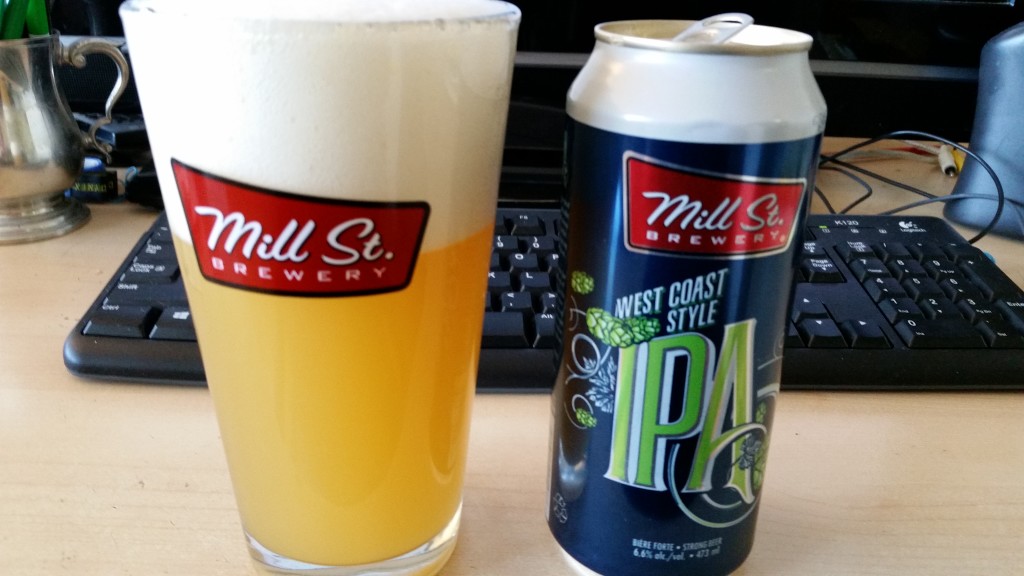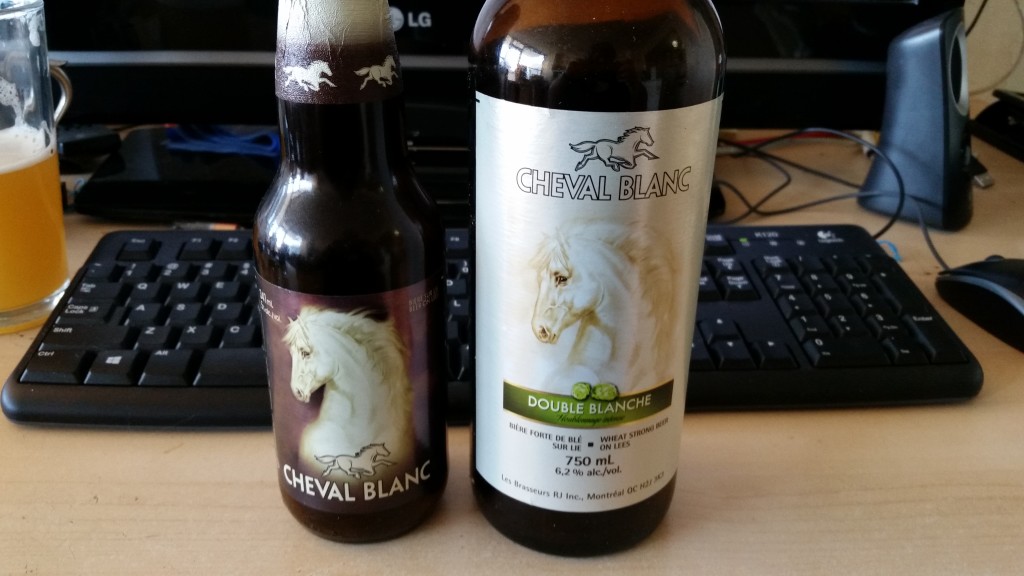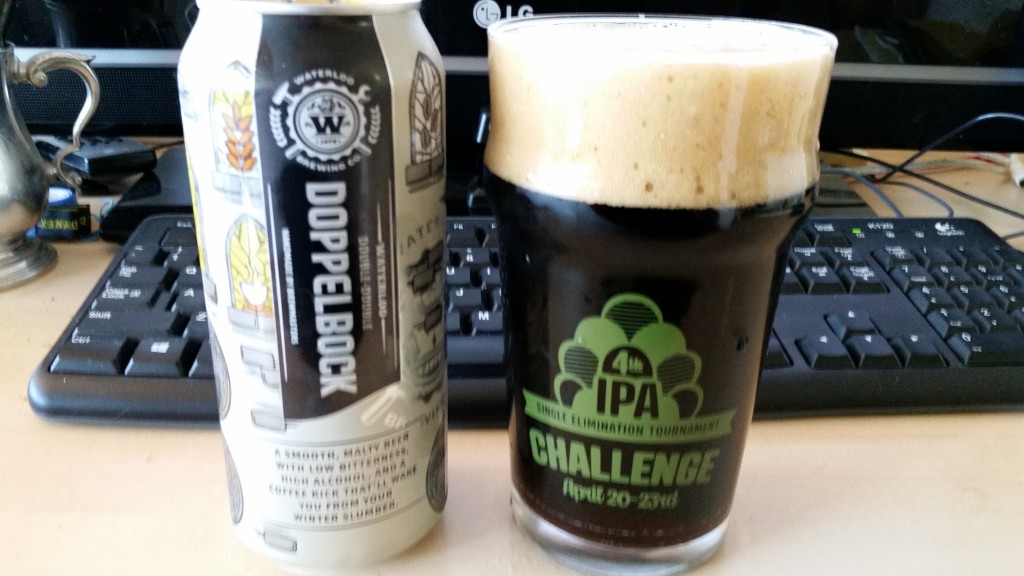When we were coming up with a rating system for the Ontario Craft Beer Guide, we had a lot of material to work with. We’re familiar with BJCP style guidelines, but the simple fact is that they don’t actually reflect reality terribly well. They are good guidelines for competition because they provide a standard against which things can be judged.
That said, there are a lot of brewers who succeed outside of those guidelines. When you’re dealing with a diverse group of brewers, some of whom are breaking ground in different directions, those guidelines are like a bridge that will take you halfway there. You need something else to work with.
In addition to technical flaws and style guidelines, one of the things Robin and I talked about a lot was intent and expectation management: How much is the beer what it claims to be? For instance: if there’s a Blonde Ale and it tastes like chocolate and peanut butter, it probably scores lower than it would if it were referred to by some specialty title.
Consider Alexander Keith’s IPA (not in the book) as an example. There’s no way in which that would convince anyone in a blind tasting that it is an IPA. If you called it a Blonde Ale or a Pale Lager, you’d probably score higher on points (although maybe not much higher).
Breweries have the ability to set up expectations with the branding and marketing and classification of their product before you ever drink it. Now, it doesn’t work that way in blind tasting, but reality is not a blind tasting. Reality has magazine ads and incentivization and patio umbrellas and radio jingles. A consumer guide should tell you what to expect and for that reason expectation management is an important criteria.
We’re not saying, incidentally, that we want more gimmick beers. We don’t. We just take into account the idea of authorial intent and execution.
Let’s take a look at three handy examples and see if I can illustrate the point.
MILL STREET WEST COAST STYLE IPA

People poo poo the shaker glass. I like the heft. then again, I’m hard on things. It comes of being big and not quite remembering that.
This is an interesting beer. Joel Manning was apparently developing this a year before Labatt was in the picture, so it’s not something that happened because of their influence. Let me tell you the vital statistics: It contains malted wheat and is kettle soured. It is made with an English Ale Yeast and it is aged briefly over toasted oak. While it technically has 87 IBU, it contains a disparate grouping of hops: Hallertau Blanc (pineapple, white grape, gooseberry, passionfruit), El Dorado (pear, watermelon, stone fruit) and Mosaic (mango, lemon, citrus).
Here’s the thing: because of the opacity of the liquid and because of the pronounced orange aroma and lightly citric bite on the palate and the malted wheat contributing to the lightness of texture, it doesn’t read as a West Coast IPA. What it basically reads like is an outsized, overbittered Witbier. The food pairings at the launch suggest they know this. They were fish heavy and the salmon croquette with a thai coconut curry sauce is a dead giveaway. Dutch trading empire influence.
If you were tasting it blind, God only knows what you’d make of this. If you were going to enter it in the 2015 BJCP as something, the only chance it would have would be in White IPA. That’s not how it’s billed. It’s billed as a West Coast IPA, but the opacity is like something out of Vermont.
To sum up: It’s technically proficient and pretty difficult to make, it’s very tasty and it has very little to do with what it claims to be. I would probably not dock it any points (4 or Very Good), but the tasting notes would indicate I thought it verged out of style.
CHEVAL BLANC DOUBLE BLANCHE

Would you believe I saved these bottles nearly two months to find a place to make this point? You would? Of course you would. You’d believe anything.
This is really interesting to me because of what it doesn’t do. What you’ve got here is a Belgian IPA from Brasseurs RJ in Montreal. They own McAuslan now and this was dropped off by Barry Pletch. I’m just using it as an example for this purpose because I find the thought process might explain some things.
If you have been following beer in Ontario for a long time, you know that Belgian IPA here tends to mean “We got Belgian yeast and put it in an IPA” and initially didn’t involve much more thought than that. Sort of an emergent style and people were flying by the seat of their pants. You ended up with overbearing hop character that didn’t mesh well with the yeast profile. Now there’s a BJCP guide for Belgian IPA and it includes things like Urthel Hop-it and Houblon Chouffe. I find both of those beers to be monstrous. Just huge and bitter and in the case of Houblon Chouffe especially, something like being entombed under a patch of narcissus. Vulgar and Dirty and Floral like a garden in a child’s crayon scrawl.
Double Blanche is a Belgian IPA based on Cheval Blanc. So you’ve got a beer that is more or less the quintessential Witbier (expect without coriander, apparently, according to Bazzer) that they have intentionally exceeded and made more bitter. The literal translation on the bottle is “Wheat Strong Beer on Lees” which sort of speaks to the concept. It’s 55 IBU and 6.2% alcohol and really refreshing. It’s sort of like the Opposite of the Mill Street West Coast IPA conceptually. This is a Witbier they enhanced rather than a hoppy beer that plays like a Witbier. Bright citrus and Belgian yeast character. How can you go wrong with a profile you already had?
I would probably give Cheval Blanc something like a (4.5). I like the thought process and I think it does what it says on the tin. Also at $5.95 a 750 ml bottle at the LCBO you should go and buy some. Now.
WATERLOO DOUBLE-DOUBLE DOPPELBOCK

Doppelbock is a style of beer named after a legendary two headed chicken from Einbeck. No, no it isn’t. See? You WILL believe anything.
Portrayed as “A smooth, malty beer with low bitterness, high alcohol, and a coffee kick that’ll wake you from your winter slumber” this is a really good example of effective branding on a seasonal beer with a gimmick. This beer does exactly what it says it is going to do. You open this can and you might as well be in Maxwell’s house. It is immediately aromatically recognizable as a coffee with two cream and two sugar. If you’re a Canadian you smell this and you’re looking for a rim to roll. On the palate it becomes not unlike the molasses Halloween candies you remember eating last. The ones with the orange and black wrappers from Kerr’s.
What this is, then, is a beer that promises coffee on the aroma and the malt sweetness gets away from it a little on the palate. As it warms, it becomes sweeter still. That said, it’s not out of the range of acceptability for a Dopplebock in terms of its sweetness.
I don’t know that it’s a great beer. It’s certainly not a world beating Doppelbock. Neither, however, is it going to disappoint or mislead anyone. It does precisely what it says it is going to. It probably merits a (3.5) on the Ontario Craft Beer Guide scale. It has no obvious technical flaws and largely achieves what it sets out to. And coming from Waterloo, it’s a nice little surprise.